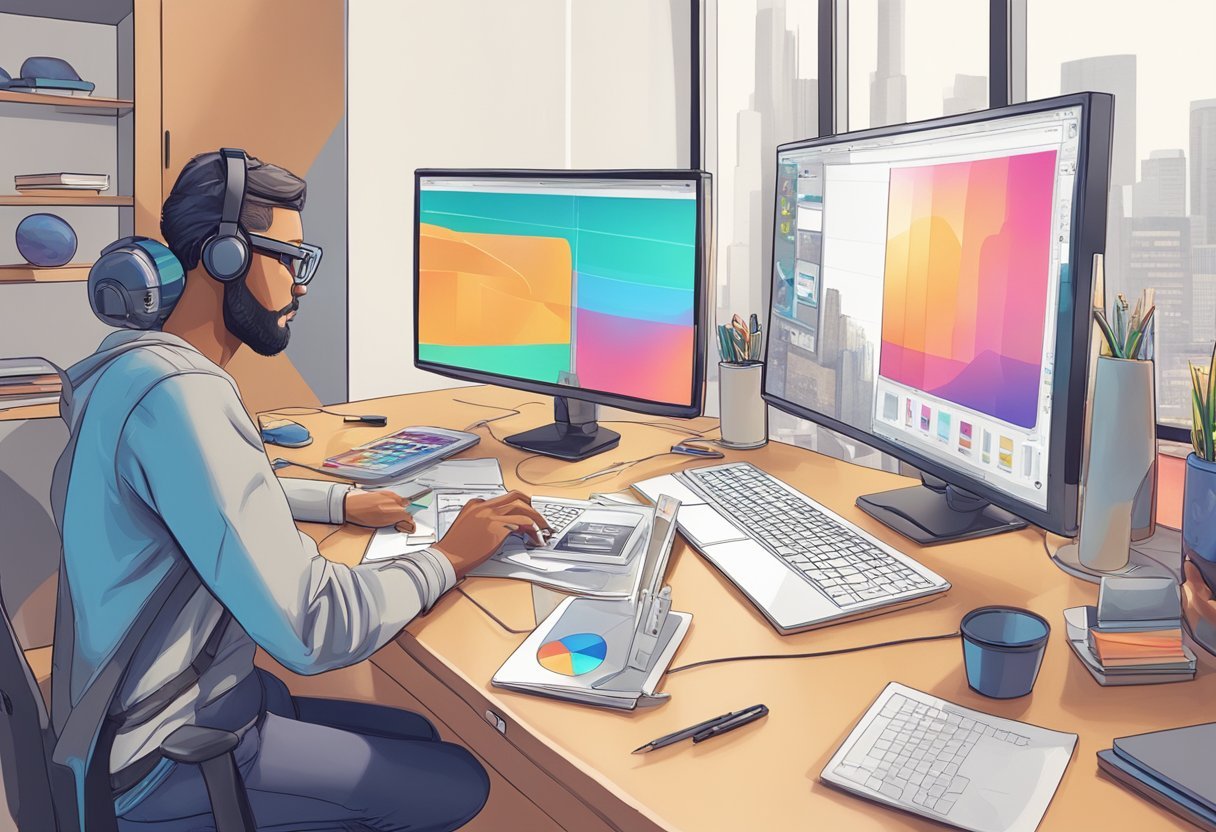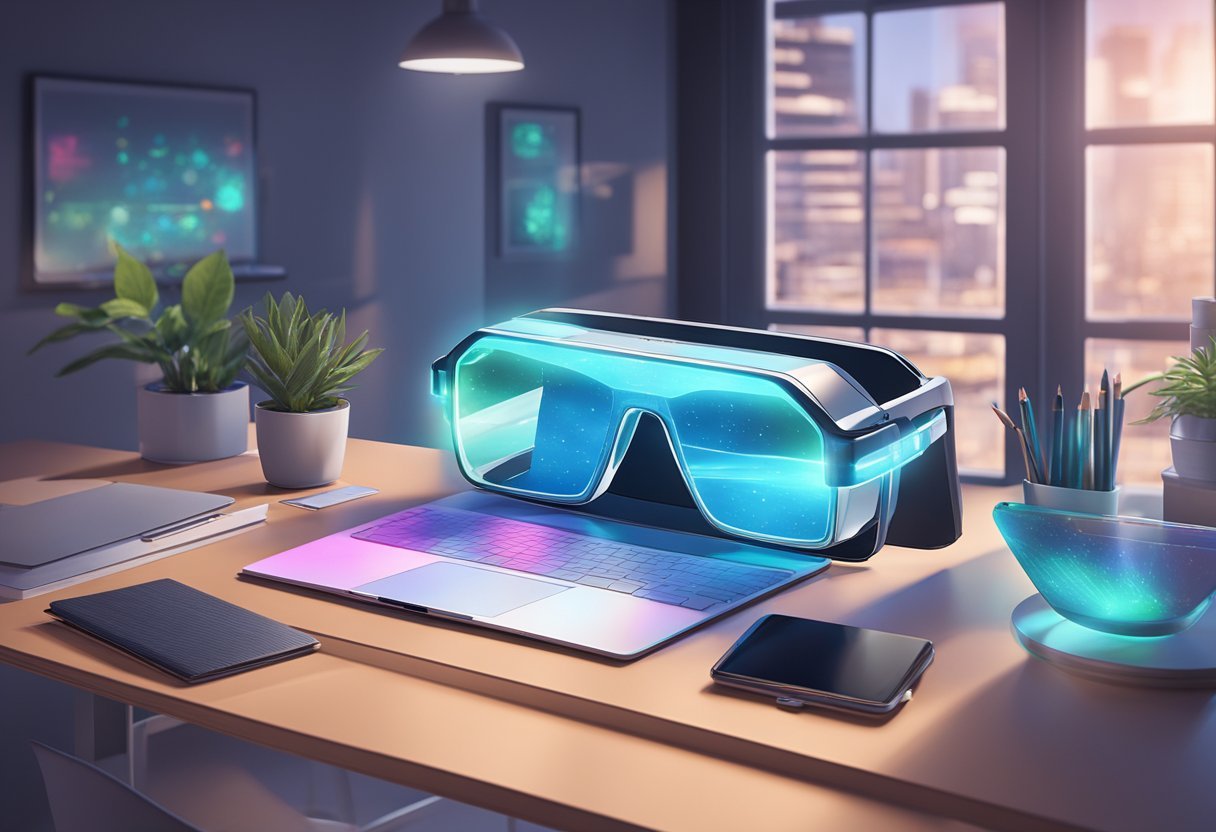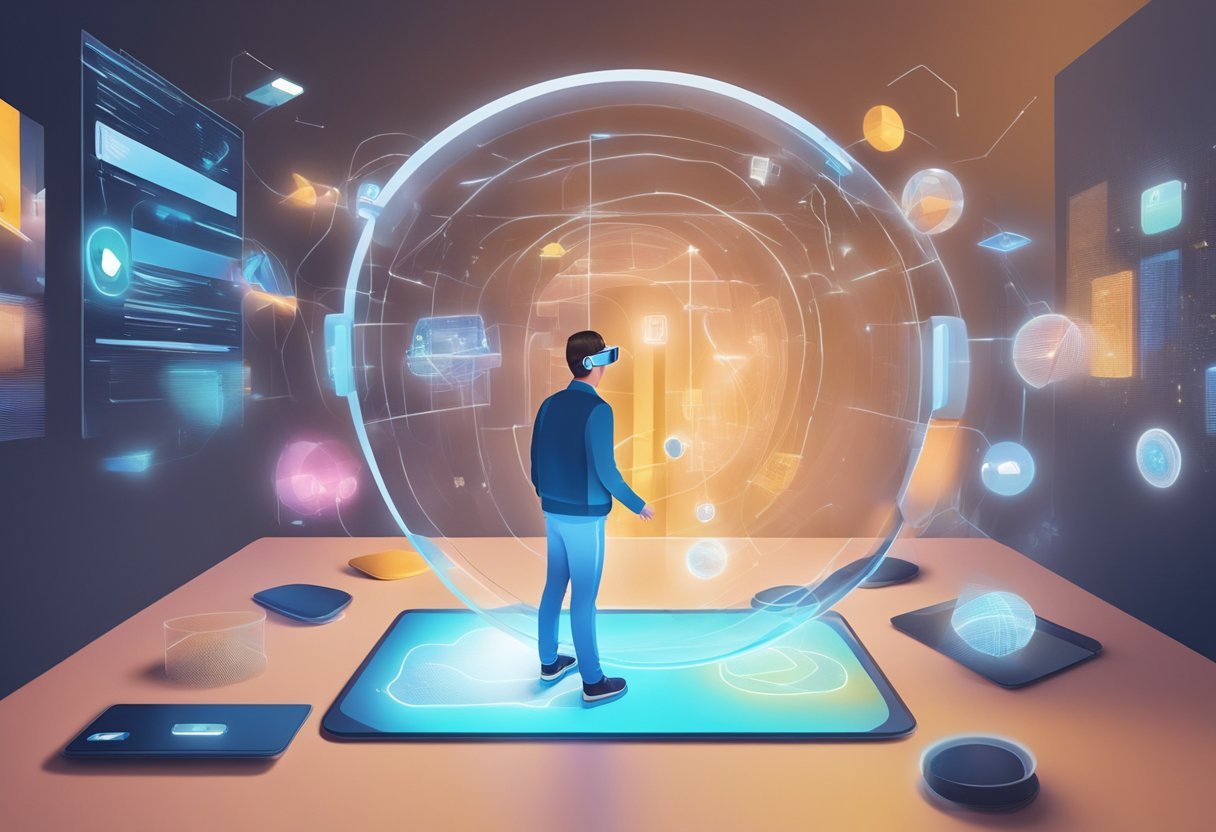Creating augmented reality 3D models has become one of the most sought-after skills in the tech industry. Augmented reality (AR) is a technology that superimposes digital information onto the real world, creating a new and interactive experience. 3D models are an essential component of AR, as they allow users to interact with virtual objects in a more realistic way. In this blog post, I will share with you a step by step guide of how to create augmented reality 3d models, skills and platforms to use.
To create an AR 3D model, one needs to have a basic understanding of 3D modeling techniques. This includes knowledge of 3D modeling software programs such as Sketchfab, Reality Composer, and Adobe Aero, among others. These software programs offer an extensive range of features that can help create realistic and immersive models. One needs to have an eye for detail and creativity to ensure that the final product is visually appealing and engaging.
Understanding Augmented Reality and 3D Models
The Basics of AR
Augmented Reality (AR) is a technology that overlays digital content onto the real world, creating an immersive experience for the user. AR enables users to interact with digital objects in a real-world environment, providing a more engaging and interactive experience. AR is becoming increasingly popular in various industries, including gaming, entertainment, education, and marketing.
Core Concepts of 3D Modeling
3D modeling is the process of creating a digital representation of a three-dimensional object. The goal of 3D modeling is to create a realistic and detailed digital object that can be used in various applications, including animation, gaming, and AR. 3D models are created using specialized software and can be exported in various file formats, including OBJ, FBX, and STL.
When creating 3D models for AR, it is essential to consider the real-world environment and how the digital object will interact with it. The 3D model must be optimized for AR, which involves creating a model that is compelling, realistic, and spatial. The 3D model must be designed to provide an immersive user experience, which requires careful attention to detail.
Understanding the basics of AR and core concepts of 3D modeling is essential when creating augmented reality 3D models. Creating a compelling and realistic 3D model that is optimized for AR is critical to providing an immersive user experience. By considering the real-world environment and how the digital object will interact with it, developers can create engaging and interactive AR experiences for users.
Creating 3D Models for AR
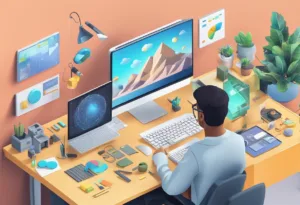
Creating 3D models for AR applications requires specific techniques and software. In this section, we will discuss the different aspects of creating 3D models for AR, including choosing the right software, modeling techniques, texturing, and animation.
Skills required to create augmented reality 3D models
- 3D Modeling: Proficiency in 3D modeling software to create the geometry of objects.
- Texturing: Ability to apply and adjust textures to give surfaces a realistic or stylized look.
- Rigging: Setting up the structure of 3D models so they can be animated.
- Animation: Creating smooth and realistic animations for 3D models.
- Optimization: Reducing the polygon count and texture sizes for performance efficiency.
- UV Mapping: Unwrapping a model’s surface to apply a 2D texture correctly.
- Lighting: Understanding how light affects the appearance of 3D models and their environment.
- Rendering: Generating a photorealistic or non-photorealistic image from a 3D model.
- AR-specific Knowledge: Understanding the limitations and capabilities of AR platforms.
Platforms for creating augmented reality 3d models
Blender
Blender is a free and open-source 3D creation suite that provides a comprehensive range of tools for modeling, rigging, animation, simulation, rendering, compositing, and motion tracking. It’s highly regarded for its versatility and the fact that it’s free makes it accessible to hobbyists and professionals alike.
Blender’s features include an advanced sculpting toolset, a powerful rendering engine (Cycles), and a fully integrated compositor. It supports the creation of AR 3D models through its ability to export to various file formats that are compatible with AR development platforms. Blender’s community-driven development means that it’s constantly being updated with new features and improvements.
Maya
Maya is a professional 3D software for modeling, animation, rendering, and visual effects. It’s widely used in the film, television, and gaming industries. Maya offers a comprehensive set of tools for creating detailed 3D models, realistic animations, and stunning visual effects. It has robust simulation tools for creating dynamic effects like cloth and fluids.
For AR 3D model creation, Maya provides extensive support for polygon modeling, texturing, and lighting, which are crucial for developing high-quality AR content. While it is a premium software, it is a standard in the industry for creating professional 3D content.
3ds Max
3ds Max from Autodesk is another industry-standard software for 3D modeling, animation, rendering, and visualization. It is known for its powerful modeling capabilities, flexible plugin architecture, and its ability to handle complex scenes.
3ds Max is often used for game development, architectural visualizations, and creating detailed characters and feature films. Its material editor and high-end rendering features, including the Arnold renderer, make it suitable for creating realistic textures and lighting for AR models. 3ds Max also has strong interoperability with other Autodesk products and various export options for AR platforms.
Cinema 4D
Cinema 4D is a 3D modeling, animation, motion graphic, and rendering application developed by MAXON. It’s praised for its ease of use, quick learning curve, and powerful features. Cinema 4D provides a wide range of tools for creating 3D content, including an intuitive interface, a fast and powerful rendering engine, and a vast array of presets and scenes to help speed up the creation process.
It’s particularly popular among motion graphics artists. For AR, it offers excellent capabilities for creating high-quality 3D models with detailed textures and animations that can be exported for use in various AR applications.
ZBrush
ZBrush is a digital sculpting tool that combines 3D/2.5D modeling, texturing, and painting. It uses a proprietary “pixol” technology which stores lighting, color, material, and depth information for all objects on the screen, which is particularly useful for creating highly detailed 3D models.
ZBrush is favored for its advanced sculpting and painting capabilities, allowing for intricate details to be added to 3D models, which is essential for creating realistic AR content. Although ZBrush is more focused on organic modeling (such as characters and creatures), it can also be used to create inorganic models for AR applications, and its models can be exported to other digital content creation tools for further processing or integration into AR platforms.
Choosing the Right Software
Choosing the right software is crucial when creating 3D models for AR. Some of the popular software options include Maya, Blender, and 3DS Max. Each software has its own strengths and weaknesses, and the choice ultimately depends on the user’s preferences and experience.
Maya is a popular software for 3D modeling, animation, and rendering. It is widely used in the film and gaming industry. Blender, on the other hand, is a free and open-source software that is popular among beginners and hobbyists. 3DS Max is another popular software for 3D modeling and animation.
Modeling Techniques
Modeling techniques vary depending on the software used. However, some of the basic techniques include box modeling, polygonal modeling, and sculpting. Box modeling involves creating a basic shape and then adding details to it. Polygonal modeling involves creating 3D models using polygons. Sculpting involves creating 3D models by manipulating a digital clay-like material.
Texturing and Animation
Texturing and animation are important aspects of creating 3D models for AR. Texturing involves adding colors and textures to the 3D models to make them look more realistic. Animation involves creating movement and actions for the 3D models.
Unity is a popular software for texturing and animation. It allows users to create complex animations and add textures to 3D models. Other software options for texturing and animation include Maya and Blender.
Creating 3D models for AR requires specific techniques and software. Choosing the right software, mastering modeling techniques, and adding textures and animations are important steps in creating realistic and immersive 3D models for AR applications.
Optimizing 3D Models for AR Platforms
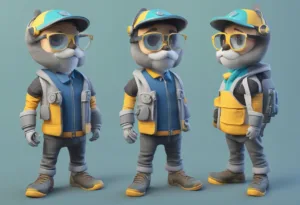
Creating 3D models optimized for augmented reality (AR) platforms requires specific considerations to ensure a seamless and realistic experience for users. In this section, we will cover the best practices for optimizing 3D models for AR platforms, including file formats and compression, ensuring realistic proportions, and improving performance.
File Formats and Compression
When creating 3D models for AR platforms, it is important to consider the file format and compression method used. The most commonly used file formats for AR models are GLTF, FBX, and DAE. GLTF is the recommended file format for AR models due to its small file size and ability to store multiple textures and animations in a single file. FBX and DAE are also commonly used, but they may require additional compression to reduce file size.
To reduce file size, compression methods such as GLB can be used. GLB is a binary format that combines the 3D model and its textures into a single file, reducing the number of files required to load the model and improving performance.
Ensuring Realistic Proportions
To ensure a realistic AR experience, it is important to create 3D models with accurate proportions. This can be achieved by using real-world measurements when creating the model or by using reference images to ensure the model matches the real object as closely as possible. It is important to consider the size of the model when creating it. The size of the model should match the size of the real object to ensure a seamless AR experience.
Improving Performance
To improve performance when creating 3D models for AR platforms, it is important to reduce the number of polygons and textures used in the model. This can be achieved by using LOD (level of detail) models, which are simplified versions of the model that are used when the model is far away from the viewer. Reducing the number of textures used in the model can improve performance by reducing the number of texture swaps required when rendering the model.
Optimizing 3D models for AR platforms requires specific considerations to ensure a seamless and realistic experience for users. By following best practices such as using the recommended file formats, ensuring realistic proportions, and improving performance, 3D model creators can create high-quality AR experiences for users.
Integrating 3D Models into AR Experiences
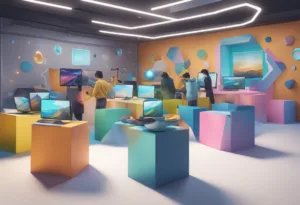
Creating a 3D model for AR is just the beginning. The real challenge is integrating it into an AR experience that is both immersive and interactive. In this section, we will explore some key considerations when integrating 3D models into AR experiences.
AR Tracking and Interactivity
AR tracking is an essential element of any AR experience. It allows the 3D model to be anchored to the real world and move in sync with the user’s movements. There are various AR tracking technologies available, including marker-based tracking, markerless tracking, and SLAM (Simultaneous Localization and Mapping) tracking. The choice of tracking technology will depend on the specific requirements of the AR experience.
Interactivity is another critical element of an AR experience. It allows users to engage with the 3D model and interact with it in various ways. This can include animations, audio, video, and other multimedia elements. The interactivity of an AR experience can be achieved through various means, including touch, voice, and gesture recognition.
Adding Multimedia Elements
Adding multimedia elements to an AR experience can enhance its overall impact and make it more engaging for users. This can include animations, audio, video, and other types of media. When adding multimedia elements, it is essential to ensure that they are integrated seamlessly into the AR experience and do not detract from the overall user experience.
Testing and Iteration
Testing and iteration are critical elements of any AR experience. It allows developers to identify and address any issues with the AR experience before it is released to the public. Testing can include various types of testing, including user testing, performance testing, and compatibility testing.
Integrating 3D models into AR experiences requires careful consideration of various factors, including AR tracking, interactivity, multimedia elements, and testing. By taking a systematic approach and following best practices, developers can create AR experiences that are both immersive and engaging for users.
Publishing and Sharing AR Content
Creating augmented reality models is just one part of the process. Once the models are ready, they need to be published and shared with others. This section will discuss how to publish and share AR content, including using AR apps and platforms, crafting engaging AR scenarios, and educational and social media use.
Using AR Apps and Platforms
AR apps and platforms are a great way to share AR content with others. There are many different AR apps and platforms available, each with its own set of features and capabilities. Some of the most popular AR apps and platforms include Overly AR Creator, AR Code Studio, and Blender.
When using AR apps and platforms to share AR content, it is important to ensure that the content is optimized for the platform. This may involve resizing the content, adjusting the lighting, or making other modifications to ensure that the content looks its best.
Crafting Engaging AR Scenarios
Crafting engaging AR scenarios is another important part of publishing and sharing AR content. AR scenarios should be designed to engage the user and provide an immersive experience. This may involve creating interactive elements, adding sound effects, or using other techniques to enhance the user’s experience.
When crafting engaging AR scenarios, it is important to keep the user’s perspective in mind. The user should be able to easily navigate the scenario and interact with the content in a natural and intuitive way.
Educational and Social Media Use
AR content can also be used for educational and social media purposes. For example, teachers can use AR content to create engaging and interactive lessons for students. Social media platforms like Instagram and Snapchat also support AR content, allowing users to create and share AR experiences with their followers.
When using AR content for educational and social media purposes, it is important to ensure that the content is appropriate and relevant to the audience. The content should be designed to educate or entertain the audience, and should be optimized for the platform to ensure that it looks its best.
Publishing and sharing AR content involves using AR apps and platforms, crafting engaging AR scenarios, and using AR content for educational and social media purposes. By following these guidelines, AR creators can ensure that their content is optimized for the platform and provides an immersive and engaging experience for the user.
Frequently Asked Questions
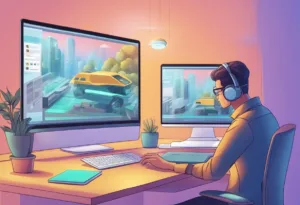
What software can be used to create 3D models for augmented reality?
There are many software options available for creating 3D models for augmented reality. Some popular ones include Blender, Maya, 3ds Max, and SketchUp. Each software has its own unique features and capabilities, so it is important to research and choose the one that best fits your needs.
What are the steps involved in converting a 3D model for AR use?
Converting a 3D model for AR use involves several steps. First, the model must be optimized for real-time rendering. This involves reducing the polygon count, simplifying the geometry, and creating efficient UV maps. Next, the model must be exported in a format compatible with the AR platform being used. Finally, the model must be integrated into the AR app or experience.
How can 3D models be viewed in an augmented reality environment?
3D models can be viewed in an augmented reality environment using a mobile device or AR headset. The device or headset uses its camera to capture the real-world environment and overlays the 3D model onto it in real-time. This creates the illusion that the 3D model is part of the real-world environment.
Are there any free resources for obtaining 3D models suitable for AR?
Yes, there are several free resources available for obtaining 3D models suitable for AR. Some popular ones include Sketchfab, TurboSquid, and Google Poly. These resources offer a wide vARiety of 3D models that can be used in AR experiences.
How can augmented reality enhance product visualization?
Augmented reality can enhance product visualization by allowing customers to see products in 3D and in real-world environments. This creates a more immersive and engaging experience that can lead to increased sales and customer satisfaction.
What methods are available for integrating 3D models into an AR-enabled website?
There are several methods available for integrating 3D models into an AR-enabled website. One method is to use an AR SDK, such as ARKit or ARCore, to create an AR experience that can be accessed through the website. Another method is to use a web-based AR platform, such as 8th Wall or Zappar, to create and host the AR experience directly on the website.

